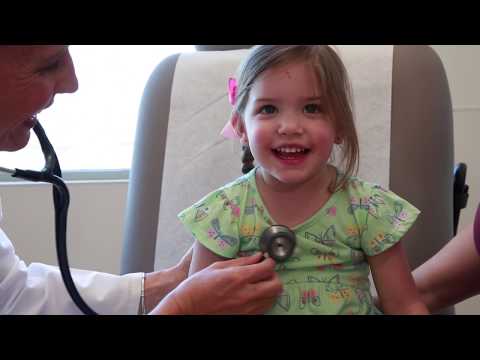What is a Clinical Medical Assistant?
Contents
- What is a Clinical Medical Assistant?
- The duties of a Clinical Medical Assistant
- The educational requirements of a Clinical Medical Assistant
- The skills required of a Clinical Medical Assistant
- The job outlook for Clinical Medical Assistants
- The salary of a Clinical Medical Assistant
- The working hours of a Clinical Medical Assistant
- The working environment of a Clinical Medical Assistant
- The benefits of being a Clinical Medical Assistant
- The drawbacks of being a Clinical Medical Assistant
A Clinical medical assistant is a vital member of the healthcare team. They work alongside physicians and nurses to provide care for patients.
Checkout this video:
What is a Clinical Medical Assistant?
Clinical Medical assistants are multi-skilled health care professionals specifically trained to work in outpatient settings such as medical offices and clinics. Their duties include both clinical and administrative tasks.
Clinical medical assistants typically have a broad range of responsibilities. These may include taking and recording patient vital signs, assisting with minor office procedures, preparing patients for examination, collecting and processing lab specimens, and giving patients instructions for follow-up care. In some cases, they may also be responsible for scheduling appointments, verifying insurance coverage, and coding and billing information.
Many clinical medical assistants are certified by professional organizations such as the American Association of Medical Assistants or the National Healthcare Association. Certification is not required for all positions, but it may be preferred or required by some employers.
The duties of a Clinical Medical Assistant
A Clinical medical assistant also called a “CMA,” is a medical assistant who has graduated from an accredited medical assistant program and has passed a national certification exam, such as the CMA (AAMA) Exam.
Clinical medical assistants work in outpatient care centers, such as physician offices and clinics. Their duties include, but are not limited to, taking medical histories and recording vital signs, explaining treatment procedures to patients, preparing patients for examinations, assisting the physician during examinations, and performing routine laboratory tests. In some states they may also have limited prescribing authority.
The educational requirements of a Clinical Medical Assistant
Medical assistants perform both clinical and administrative tasks in doctors’ offices, hospitals, outpatient clinics and other healthcare facilities. Their duties vary depending on the size and location of the facility, as well as the needs of the health care providers they work for.
In order to become a medical assistant, one must complete an accredited training program. These programs are typically offered at community colleges, technical schools and some universities. Some medical assistants are trained on the job, but this is becoming less common.
Medical assistants must be able to perform both clinical and administrative tasks. Clinical duties may include taking medical histories and checking vital signs, as well as preparing patients for examinations. Administrative duties may include scheduling appointments, handling billing and insurance matters and maintaining medical records
Most states do not have specific licensing requirements for medical assistants, but some do require them to take an examination to demonstrate their competency. Many employers also require certification from one of the professional organizations for medical assistants, such as the American Association of Medical Assistants or the National Healthcareer Association.
The skills required of a Clinical Medical Assistant
Clinical medical assistants are multi-skilled health care professionals specifically trained to work in outpatient settings such as medical offices and clinics. They perform both clinical and administrative tasks, such as taking and recording vital signs and medical histories, assisting physicians with examinations, scheduling appointments, handling correspondence, filing insurance claim forms, and coding patients’ Medical records
In order to become a clinical medical assistant, one must complete an accredited training program and obtain certification from a professional organization such as the National Healthcare Association or the American Association of Medical Assistants. Many programs can be completed in as little as 9 months. After completing their training and passing the certification exam, clinical medical assistants are then eligible to apply for entry-level positions in a variety of outpatient settings.
The job outlook for Clinical Medical Assistants
Clinical medical assistants are in high demand and the job outlook is excellent. These professionals are vital members of the healthcare team, providing clinical and administrative support to physicians and other healthcare providers.
Clinical medical assistants are multi-skilled professionals who are able to perform both clinical and administrative duties. They may take medical histories and record vital signs, prepare patients for examination, assist with procedures, give injections, perform basic laboratory tests, schedule appointments, manage medical records bill patients, and more.
The job outlook for clinical medical assistants is excellent. The Bureau of Labor Statistics projects that employment of medical assistants will grow 29 percent from 2019 to 2029—much faster than the average for all occupations. The growing aging population will require more medical care, and there will be an increasing number of outpatient facilities such as clinics and physician offices. Clinical medical assistants will be needed to perform both clinical and administrative duties in these settings.
The salary of a Clinical Medical Assistant
A Clinical Medical Assistant is a health care professional who helps doctors and nurses in the examination and treatment of patients. They also perform administrative duties in the office, such as scheduling appointments and handling billing.
The average salary for a Clinical Medical Assistant is $15 per hour. The median salary is $31,200 per year.
The working hours of a Clinical Medical Assistant
Clinical medical assistants usually work in physicians’ offices, outpatient care facilities, and hospitals. In small offices, they might be the only medical assistant, whereas in larger facilities they might work with several other assistants and other office staff. Most full-time clinical medical assistants work about 40 hours a week, although some work evenings or weekends to accommodate patients’ schedules.
The working environment of a Clinical Medical Assistant
Clinical medical assistants work in outpatient care centers, such as clinics and physicians’ offices. They commonly work alongside nurses and other medical assistants. The duties of a clinical medical assistant may vary depending on state law and the specific needs of the medical practice in which they work, but common duties include:
-Taking patients’ vital signs, such as blood pressure and temperature
-Measuring patients’ height, weight, and body mass index (BMI)
-Documenting patients’ medical histories
-Collecting and preparing lab specimens for testing
-Assisting with medical procedures
-Scheduling appointments
-Answering patient questions about medications, treatments, and test results
-Instructing patients on how to care for themselves at home after a procedure
The benefits of being a Clinical Medical Assistant
Clinical Medical Assistants (CMAs) are healthcare professionals who work under the supervision of licensed physicians or other licensed healthcare providers. They perform both clinical and administrative tasks in a variety of outpatient and inpatient settings, including hospitals, clinics, physician’s offices, and long-term care facilities.
The duties of a CMA can vary depending on the individual’s training, experience, and the specific needs of their employer. However, there are some tasks that are commonly performed by CMAs. These tasks include taking patient medical histories and vital signs, preparing patients for examinations, assisting physicians during examinations and procedures, performing basic laboratory tests, scheduling appointments, and handling insurance paperwork.
CMAs must have excellent communication skills and be able to maintain a professional demeanor at all times. They must also be able to multitask and stay calm under pressure. In addition to these personal qualities, CMAs must have completed an accredited medical assistant training program and passed a national certification exam.
The drawbacks of being a Clinical Medical Assistant
Though being a Clinical Medical Assistant has many perks, there are some drawbacks to the job as well. One of the most common complaints is that the job can be extremely stressful. This is due to the fact that Clinical Medical Assistants are responsible for assisting doctors with treatments and procedures, as well as keeping track of medical records. Additionally, Clinical Medical Assistants may also be responsible for handling billing and scheduling appointments. Because of the nature of the job, Clinical Medical Assistants are often required to work long hours, including nights and weekends.







